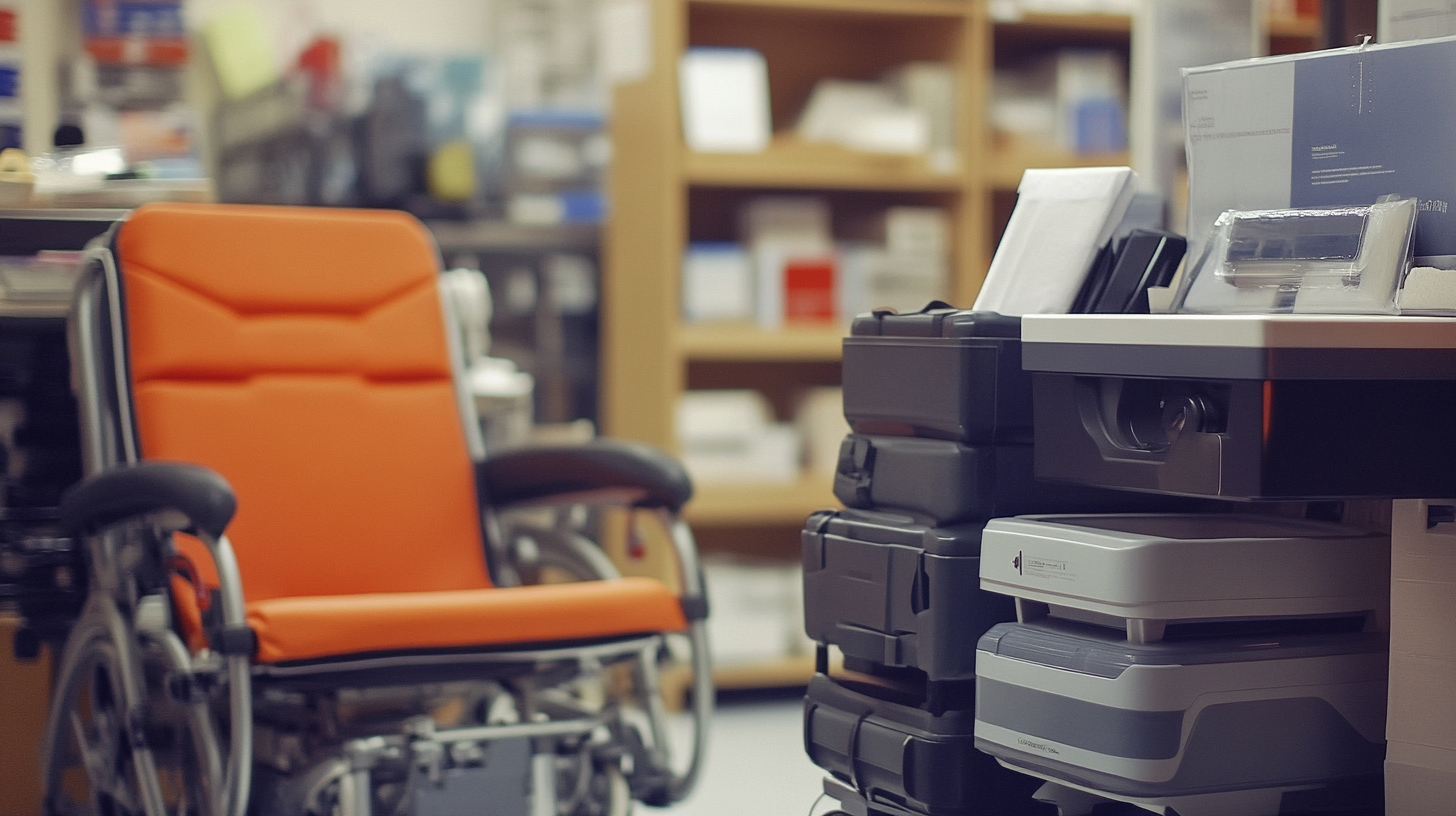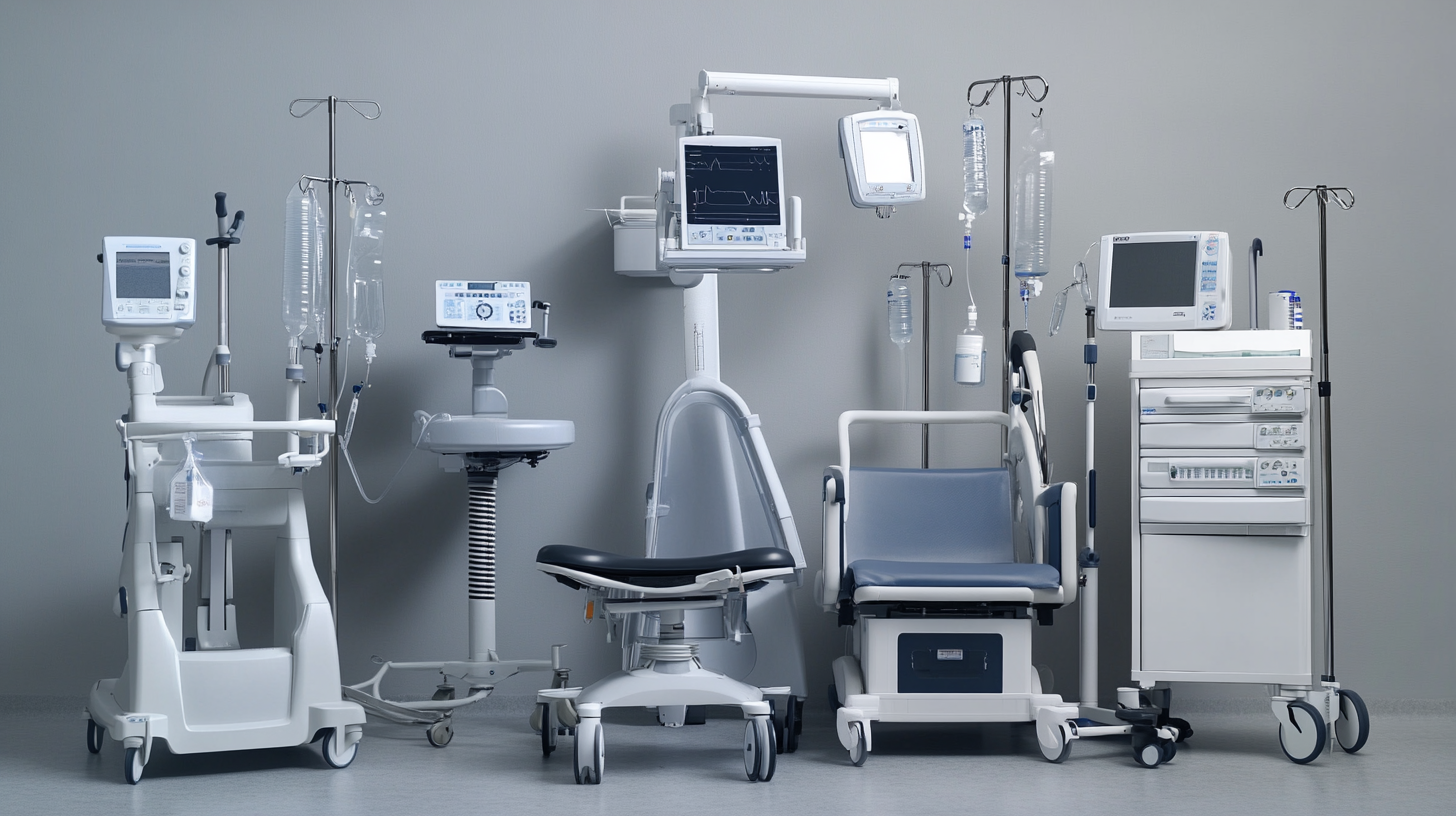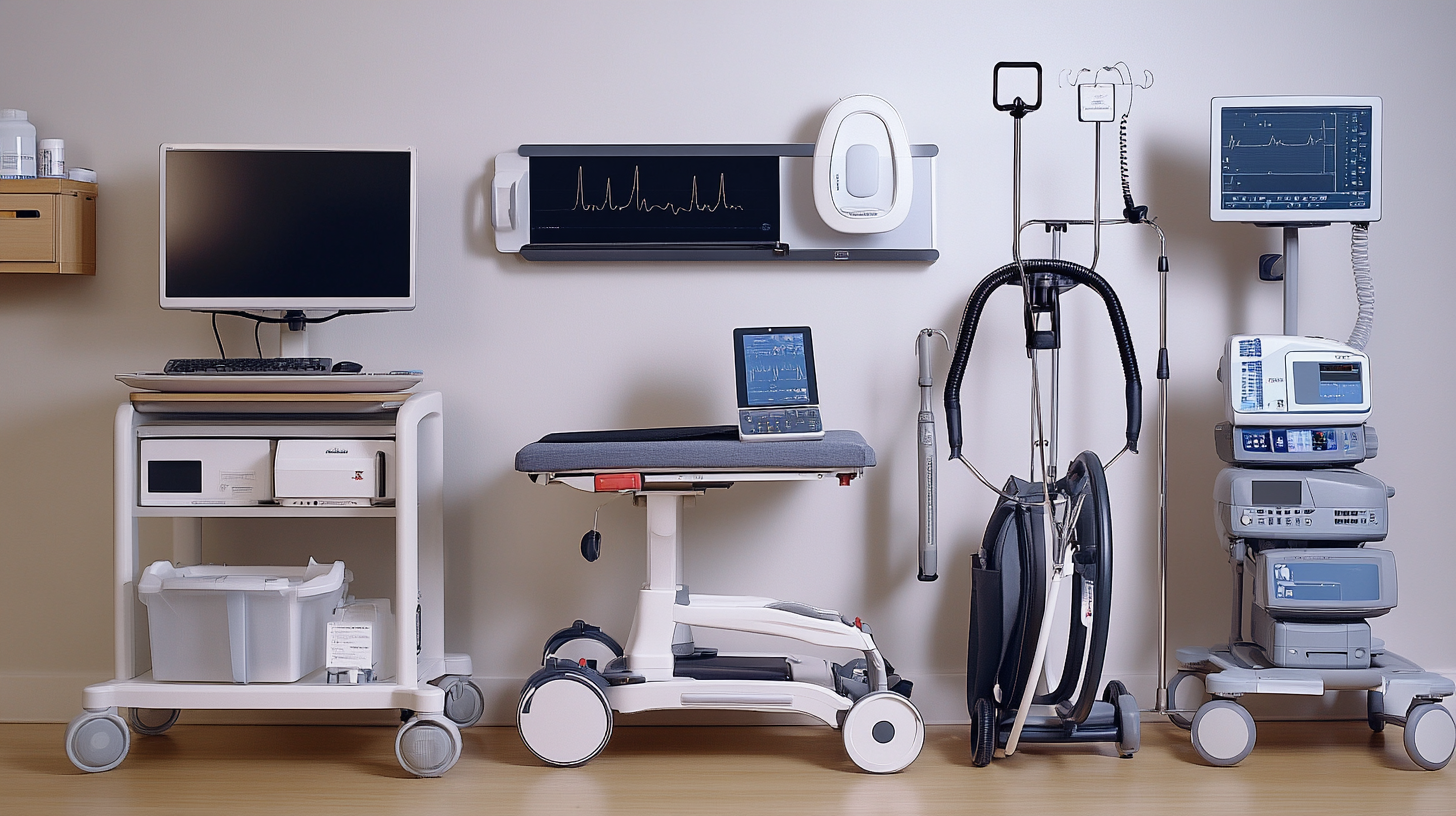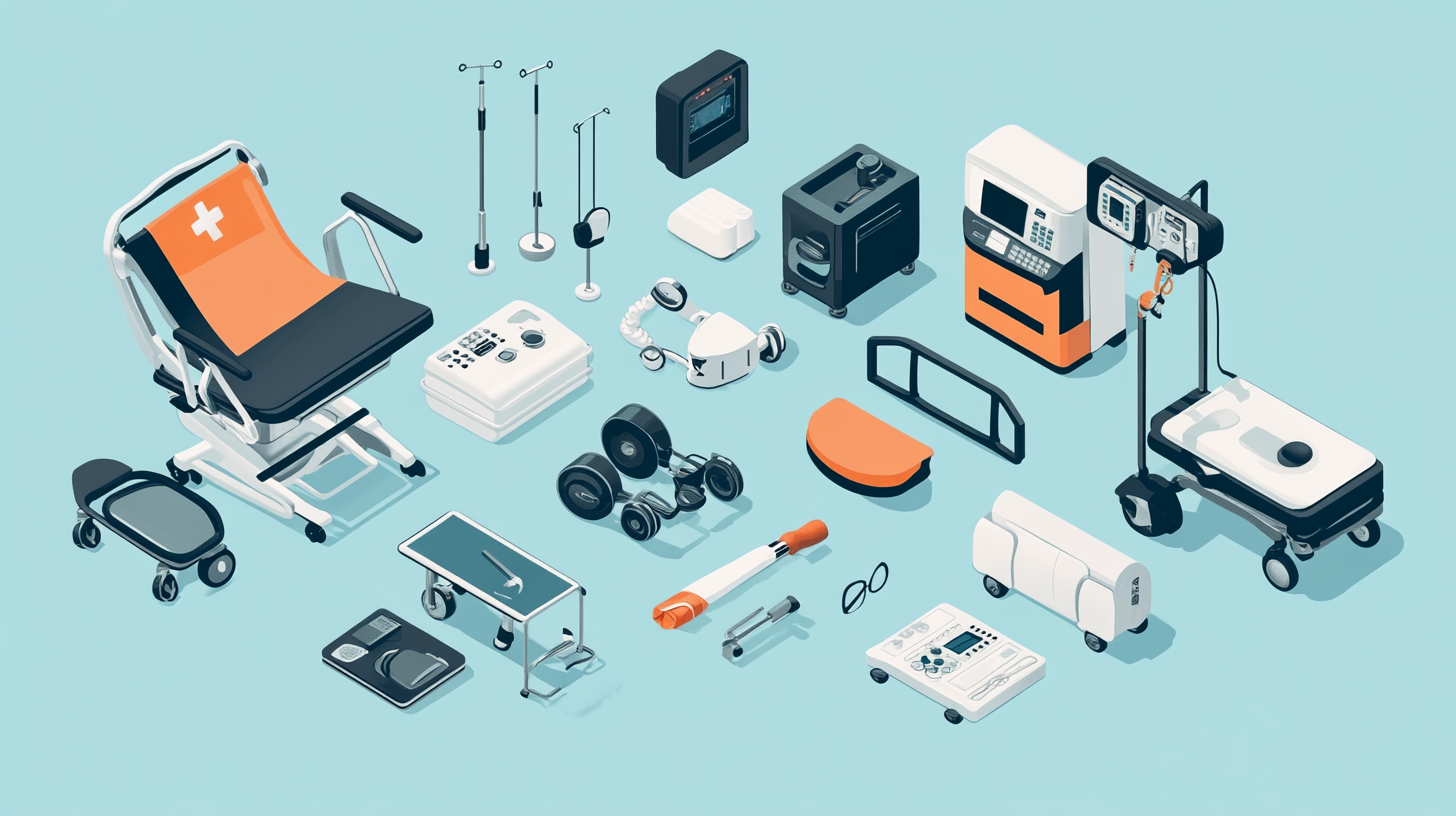Click here to browse our On The Mend Portfolio!
Navigating the Essentials: Your Guide to Selecting Home Medical Equipment
When it comes to managing health conditions at home, the right Home Medical Equipment can make all the difference. From mobility aids to respiratory devices, the choices available today are vast and can be overwhelming. Understanding your specific needs, as well as the various types of equipment available, is crucial to making informed decisions that will enhance your quality of life and ensure safety. This guide aims to simplify the selection process by offering insights into the key factors to consider when choosing Home Medical Equipment for yourself or your loved ones.
In an ever-evolving healthcare landscape, where personal care and comfort are paramount, knowing how to navigate the essentials can empower you to choose the right tools for your home. With technological advancements leading to more effective and user-friendly devices, selecting the appropriate Home Medical Equipment not only supports independence but also fosters a sense of confidence in managing health conditions. Join us as we explore the essential components to consider, making the task of selecting support equipment a less daunting endeavor.

Understanding the Importance of Home Medical Equipment in Today's Healthcare Landscape
In today's evolving healthcare landscape, the importance of home medical equipment has never been more pronounced. As digital transformation reshapes the industry, home medical equipment is not only facilitating continuity of care but also enhancing patient autonomy. Recent research indicates that 78% of patients prefer receiving care at home, underlining a fundamental shift in how healthcare services are delivered. This trend is further fueled by advancements in technology, which offer patients more innovative options for managing their health at home. Government initiatives and policy reforms are critical in driving this change. As highlighted in the 2025 life sciences outlook, the industry is witnessing a significant push towards digital health solutions that align with the preferences of an increasingly tech-savvy population. For instance, telehealth services have seen a 64% increase in adoption, allowing patients to access healthcare providers from the comfort of their homes. The role of medical equipment—ranging from respiratory devices to monitoring systems—has become essential in ensuring that patients can manage their conditions effectively and efficiently outside traditional clinical settings. Moreover, as the US healthcare system faces challenges associated with an aging society, the demand for home medical equipment is expected to surge. With an aging population projected to account for approximately 20% of the US demographic by 2030, equipping homes with appropriate medical devices will be critical not only for enhancing care but also for alleviating the pressure on overwhelmed healthcare facilities. Innovative solutions, such as digital twins and extended reality applications, are emerging to redefine patient monitoring and management, thereby reinforcing the essential role of home medical equipment in modern healthcare delivery.

Key Factors to Consider When Choosing Home Medical Equipment: Safety, Comfort, and Usability
When selecting home medical equipment, safety, comfort, and usability are paramount considerations. Safety features are crucial, particularly for devices used by individuals with specific health needs like epilepsy. Recent advancements in seizure detection devices (SDDs) demonstrate the importance of incorporating real-time monitoring to prevent potential injuries. These devices not only provide immediate alerts during seizures but also enhance the reliability of self-reported seizure events, which can often be inconsistent. A thorough understanding of how such technology aligns with user needs is essential when evaluating safety.
Comfort and usability go hand in hand when it comes to home medical equipment. Users must feel at ease with the technology to ensure it integrates seamlessly into their daily lives. For instance, in the design of medical devices, user experience must be a focal point, considering the diverse abilities and preferences of the users. This approach is not limited to individuals with epilepsy but extends to various other conditions, emphasizing the need for products that cater to the unique challenges faced by each patient. A comfortable and user-friendly design can significantly enhance patient adherence and overall satisfaction with home care solutions.
Furthermore, as home healthcare grows in popularity, addressing potential risks associated with the use of medical devices becomes vital. It’s critical that manufacturers prioritize user-centered design, incorporating feedback from patients and caregivers to improve both safety and usability. This focus not only fosters patient empowerment but also ensures that home medical equipment can deliver the support that users need when managing their health conditions at home.

Exploring Common Types of Home Medical Equipment: A Focus on Mobility Aids and Monitoring Devices
When it comes to home medical equipment, two critical categories stand out: mobility aids and monitoring devices. As the population ages, the demand for effective home healthcare solutions is skyrocketing, with the market projected to exceed USD 1,445.71 billion by 2034, up from USD 373.56 billion in 2023. This trend reflects the increasing importance of facilitating a safe and comfortable living environment for those needing assistance, particularly seniors and individuals with chronic conditions.
Mobility aids, such as walkers, canes, and wheelchairs, enable individuals to maintain independence. Recent advancements in technology have introduced smart-home devices specifically designed for aging in place, enhancing safety and ease for both users and caregivers. Features like voice-activated systems not only help manage daily tasks but also improve overall quality of life by promoting autonomy among users facing mobility challenges.
Monitoring devices play a crucial role in healthcare at home, allowing real-time health assessments. Medical alert systems are a prime example, with the best systems of 2025 already providing comprehensive support for emergencies and regular monitoring. This technology can be lifesaving, offering peace of mind for users and their families. Combining these innovative tools can create an environment that supports independence while ensuring safety, ultimately transforming the way we approach home medical care.

The Role of Telehealth in Enhancing the Use of Home Medical Equipment
The integration of telehealth into home medical equipment usage has become increasingly vital in the wake of the ongoing digital transformation in healthcare. According to a report from the American Telemedicine Association, telehealth usage exploded in 2020, with a staggering increase of 154% in telehealth visits compared to the previous year. This shift not only demonstrates a growing reliance on remote healthcare solutions but also emphasizes the need for home medical equipment that can seamlessly integrate with telehealth services.
As patients increasingly use devices like blood pressure monitors and glucose meters, telehealth platforms allow healthcare providers to collect and monitor data in real-time. A study published in the Journal of Telemedicine and Telecare highlighted that 70% of patients using remote health monitoring tools felt more engaged in their healthcare decisions. This engagement is crucial for chronic disease management, where consistent monitoring and timely interventions can significantly improve health outcomes.
Furthermore, the ease of access to telehealth services can facilitate better education on the proper use of home medical equipment. Patients can learn how to operate devices effectively through virtual demonstrations, leading to increased confidence and adherence to treatment plans. According to a survey by the Pew Research Center, 46% of adults reported that they are more likely to use health devices at home if they have access to telehealth consultations, reinforcing the link between telehealth service availability and the effective utilization of home medical equipment.
Cost Considerations: Budgeting for Home Medical Equipment Without Sacrificing Quality
When selecting home medical equipment, budgeting can be a significant concern, especially in light of potential changes in healthcare policies and economic factors. As we navigate the complexities of healthcare financing, particularly in the context of Medicaid changes stemming from election outcomes, it's crucial to consider both costs and quality. Budgeting effectively for home medical equipment means looking for solutions that provide high performance while being mindful of financial constraints.
One way to achieve this balance is to explore budget-friendly options that do not compromise on functionality. For instance, the latest innovations in home medical equipment, such as pulse oximeters and mobility aids, can offer essential features without the hefty price tag often associated with hospital-grade products. Additionally, understanding concepts like site neutrality can help consumers make informed decisions, as it highlights discrepancies in pricing across different care settings and underscores the importance of seeking value regardless of where care is provided.
Furthermore, utilizing comparison tools and resources to evaluate equipment can lead to more informed purchases. This proactive approach not only aligns with personal budget constraints but also ensures that individuals are equipped with reliable devices that enhance their quality of life. Engaging with experts, reading up on the latest cost-effective options, and staying abreast of possible healthcare reforms will empower consumers in making smart choices tailored to their needs.
View Products
- Bathroom Safety & Shower Systems
- Canes, Knee Walkers, Rollators & Wheelchairs
- Compression Socks, Stockings & Custom Garments
- CPAP Machines, Devices, Accessories & Supplies
- Incontinence Supplies
- Lift, Reclining, and Sleeper Chairs
- Power Scooters, Power Chairs & Accessories
- Ramps & Handicap Access
- Stair, Platform & Portable Lifts
- Blog
Our Locations
Visit Us in CT, NY & CA
Looking for a 'medical store near me'? Call On The Mend for the equipment and service you need!

